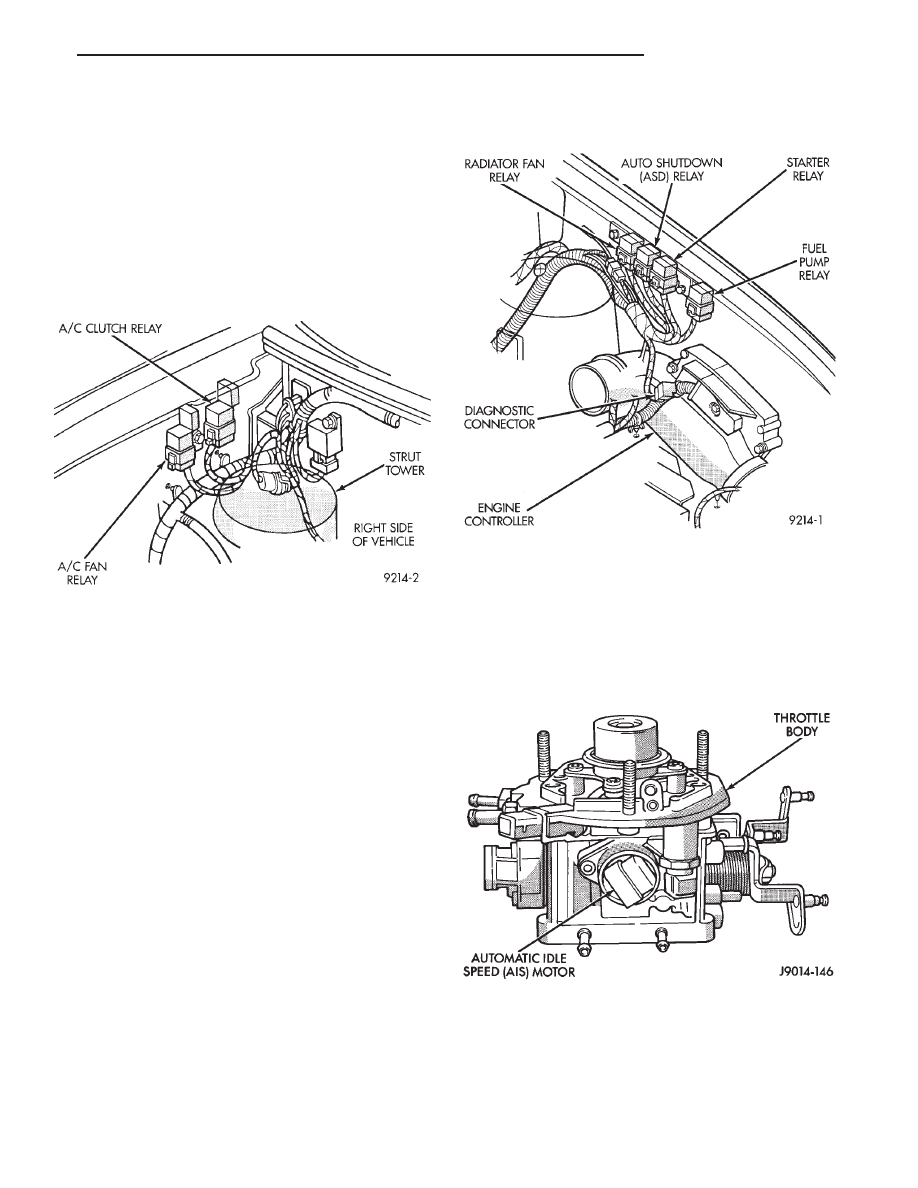Chrysler Town & Country/Voyager, Dodge Caravan, Plymouth Voyager. Manual - part 20

ergizes. The A/C fan relay energizes when the air
conditioning or defrost switch is put in the ON position
and the low pressure, A/C cycling, and high pressure
switches close.
With the engine operating, the engine controller
cycles the air conditioning clutch on and off when the
A/C switch closes with the blower motor switch in the
on position. When the engine controller senses low idle
speeds or wide open throttle through the throttle
position sensor, it de-energizes the A/C clutch relay.
The relay contacts open, preventing air conditioning
clutch engagement.
ALTERNATOR FIELD—ENGINE CONTROLLER OUT-
PUT
The engine controller regulates the charging system
voltage within a range of 12.9 to 15.0 volts. Refer to
Group 8A for charging system information.
AUTO SHUTDOWN (ASD) RELAY AND FUEL PUMP
RELAY—ENGINE CONTROLLER OUTPUT
The engine controller operates the auto shutdown
(ASD) relay and fuel pump relay through one ground
path. The controller operates the relays by switching
the ground path on and off. Both relays turn on and off
at the same time.
The ASD relay connects battery voltage to the fuel
injector and ignition coil. The fuel pump relay connects
battery voltage to the fuel pump and oxygen sensor
heating element.
The engine controller turns the ground path off when
the ignition switch is in the Off position. Both relays
are off. When the ignition switch is in the On or Crank
position, the engine controller monitors the distributor
pick-up signal to determine engine speed and ignition
timing (coil dwell). If the engine controller does not
receive a distributor signal when the ignition switch is
in the Run position, it will de-energize both relays.
When the relays are de-energized, battery voltage is
not supplied to the fuel injector, ignition coil, fuel pump
and oxygen sensor heating element.
The ASD relay and fuel pump relay are mounted on
the drivers side fender well, near to the engine control-
ler (Fig. 11).
AUTOMATIC IDLE SPEED (AIS) MOTOR—ENGINE
CONTROLLER OUTPUT
The idle speed stepper motor is mounted on the
throttle body and is controlled by the engine controller
(Fig. 12). The engine controller adjusts engine idle
speed through the AIS to compensate for engine load or
ambient conditions.
The throttle body has an air bypass passage that
provides air for the engine at idle (the throttle blade
Fig. 10 Relay Identification
Fig. 11 Auto Shutdown Relay
Fig. 12 Automatic Idle Speed Motor
.
FUEL SYSTEM
14 - 27